Travel
Personal
Artstic Influence
Branding
Portrait
CATEGORIES
Search
Here you will find tips about how to look great on camera, get your mojo back, featured portrait sessions, photoshoot. Stories about my journey as a photographer and visual artist
HELLO I'm Rachel. welcome to the blog!
Rachel's blog
welcome to
The mastery of Italian Design-the Paris Dolce and gabbana Fashion exhibtion
Filed in: art direction, Art Exhibition, Artistic Influences
My last exhibition in Paris was Dolce and Gabbana’s du Coeur à la Main, a master of craftsmanship and grandeur. This was my third exhibition in Paris and I still managed to miss a few others though. I love baroque art and Dolce and Gabbana’s baroque couture. Their fashion and magazine ads with Monica Bellucci and the Dolce Vita lifestyle are pure cinematography. The are among the artistic influences behind my photography work.
I booked this exhibition right after my Louvre Couture visit. I walked from the Louvre to the Grand Palais, passing through the Jardin des Tuileries. When I exited the museum, it started to rain. The Rue de Rivoli is now pedestrian, which is a delight. I walked under the famous arcades to stay dry. And overtook the queue at Angelina’s Café.
I hurried to the Grand Palais. Upon arrival, I noticed the new statue of General de Gaulle I had never seen before. It’s quite impressive like the man.
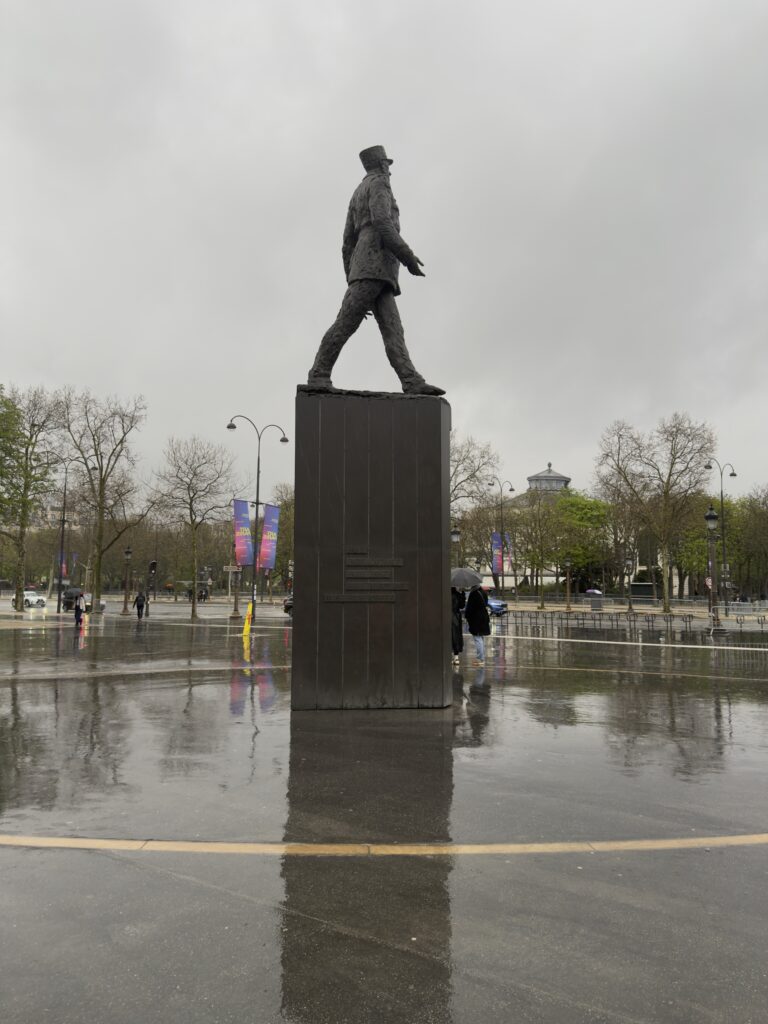
A video stand was displayed in front of the exhibition showing sculpted golden hands moving on the screen. I joined the queue; I had 30 minutes to wait before entering. When I reached the entrance, it started to rain heavily. I’m glad I had my winter coat with a hood.
Du Cœur à la Main: L’Exposition
After Milan, the Paris exhibition displayed more than 200 dresses from Alta Moda (high fashion) and Alta Sartoria (high formalwear). It included 300 accessories, handmade jewellery lta Gioielleria (high jewellery), and 130 pieces of furniture and antiques.
The name for this exhibition was “Du Coeur à la Main.” It showed how Dolce and Gabbana’s designs go from inspiration (the heart) to craftsmanship (the hand). This exhibition is a study in baroque luxury, elegance, and uniqueness, covering over 13,000 square feet. With tributes to la dolce vita, Sicilian traditions, ornament, and the Visconti film, The Leopard, is divided into sections over 10 rooms.
In the reception area, there were large screens. I followed the crowd and lifted a heavy, dark curtain. In front of a stage, Fatto A Mano (handmade), there was a display of beautiful gowns. Made from organza, tulle, feathers, lace, and metallic threads. There were also embellished headpieces. The large crowd moved slowly around the scene. I lifted my head to see the display reflected in the ceiling mirror. I loved the paintings in the room, self-portraits by Anh Duong. The exhibition was organised like a progression of sumptuous displays.
As you went further, the baroque style became more lavish. It showed clear ties to Catholicism and Sicilian heritage. Each new room overwhelmed me with beauty.
The second room I entered showed Roman and Byzantine styles. Mannequins wore Empire laurel wreaths and gowns covered in thousands of sequins, inspired by mosaics. Another room featured more of the same style with golden and metallic embroidered thread on a coat with the portrait of an Empress. The Byzantine Empire included Sicily, which explains the influence of Byzantine art in Dolce and Gabbana’s design.
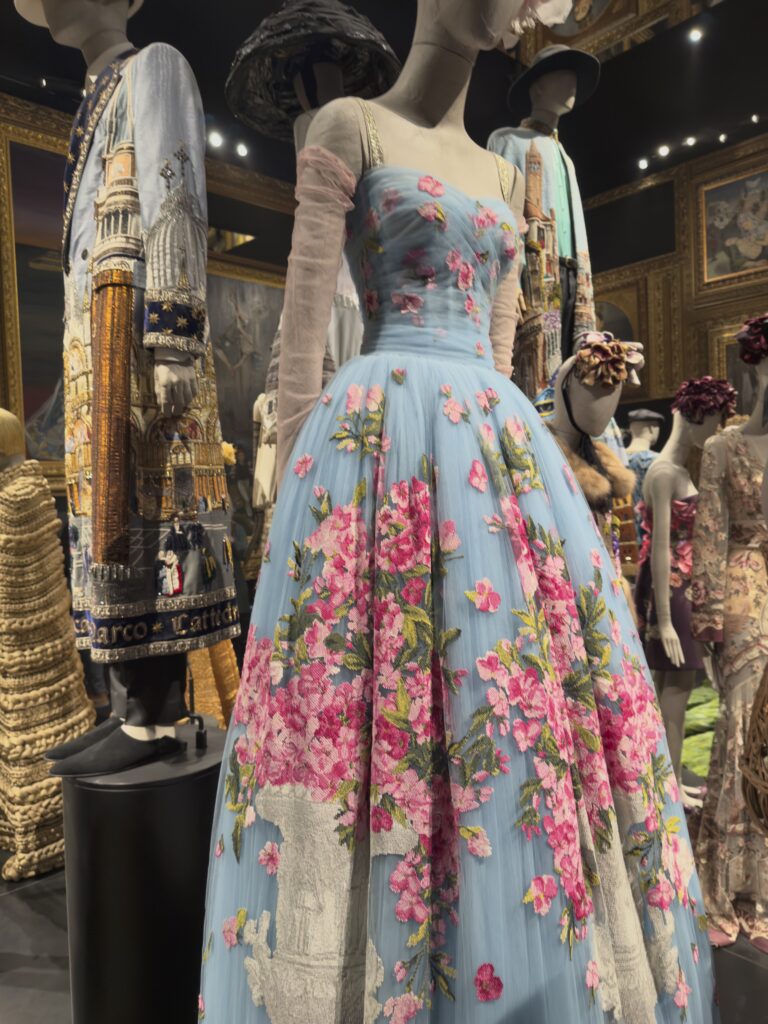
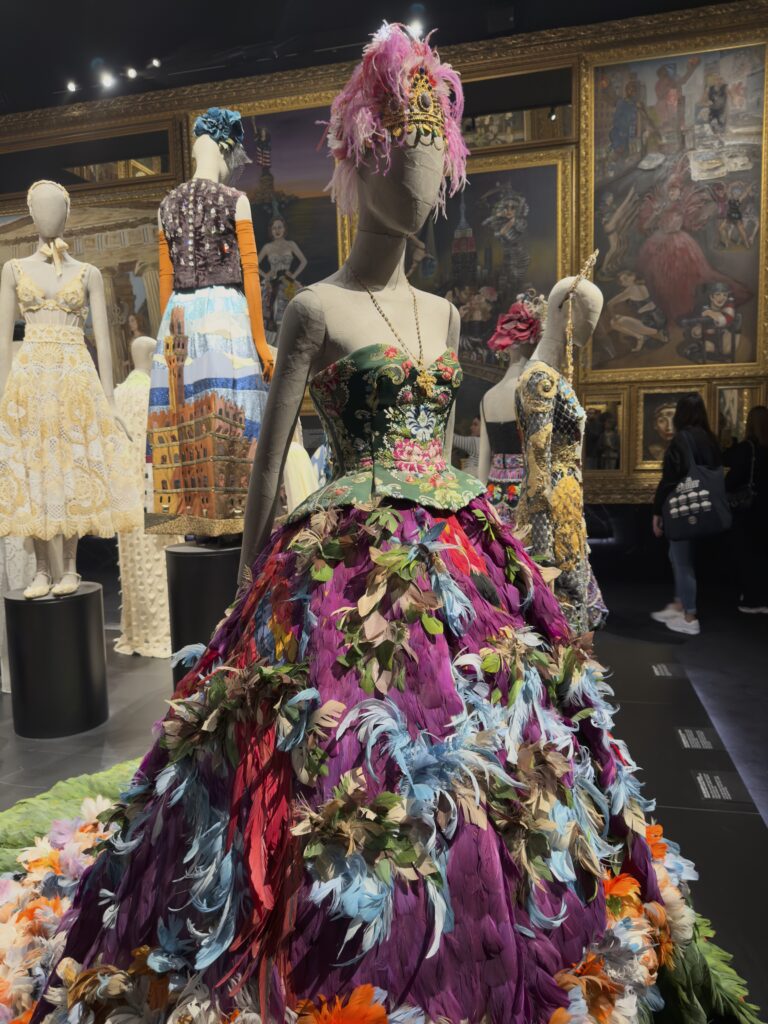

Before moving to the Sicilian room, I discovered black and white photographs of Sicily by Ursula Costa representing farm life.
The Caretto Siciliano
This room showcased Dolce and Gabbana’s Sicilian influences. It displayed incredible colours and mosaics on the wall. Gowns on mannequins with colourful headpieces. I left the room and entered a white baroque room.
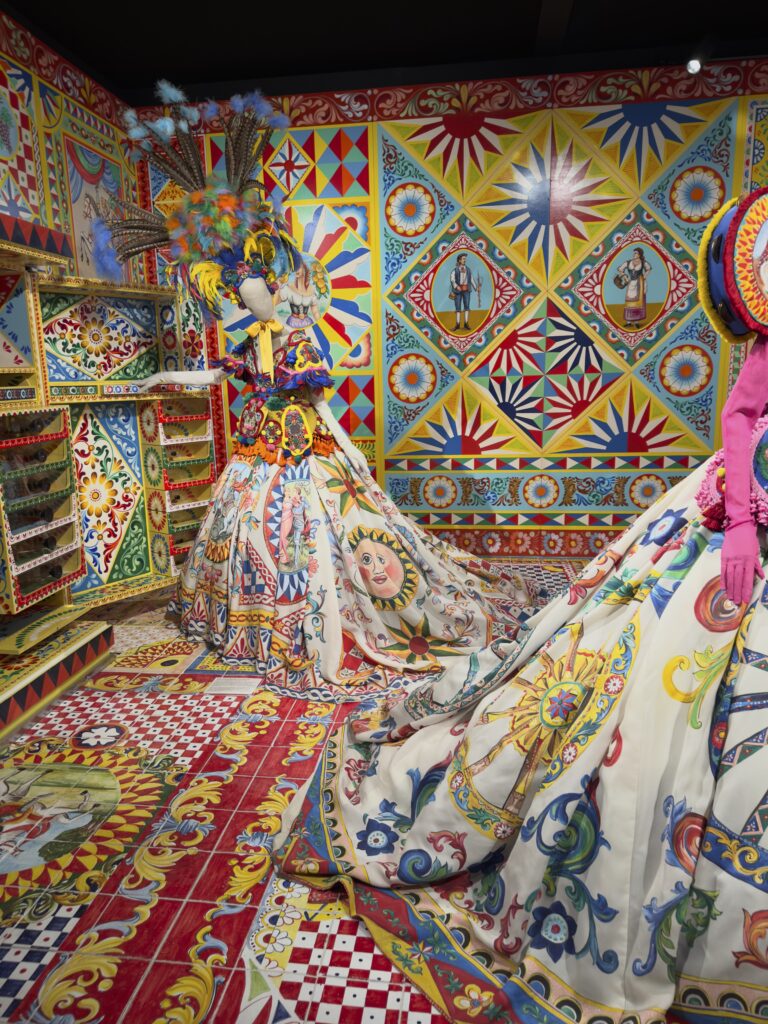
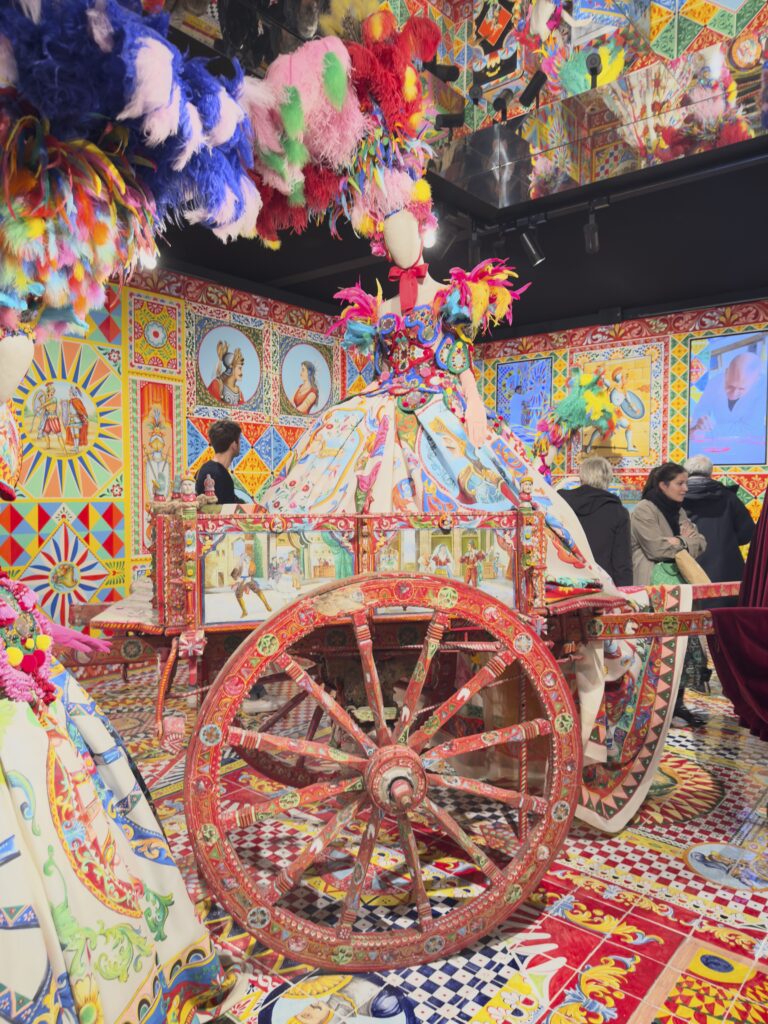
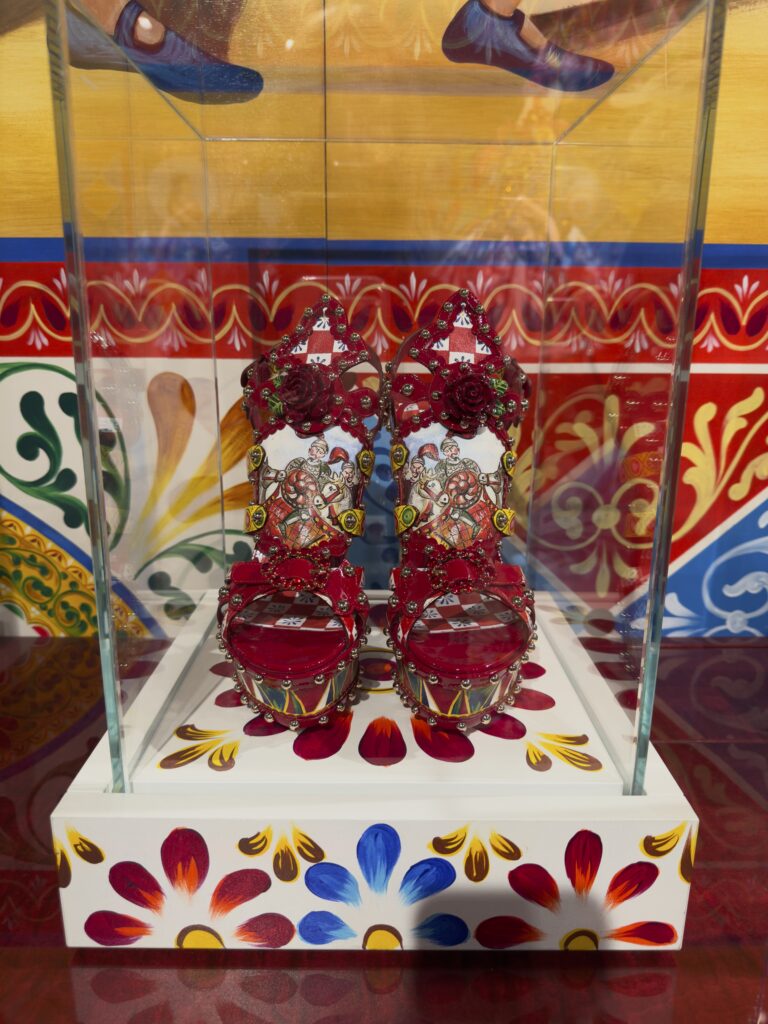
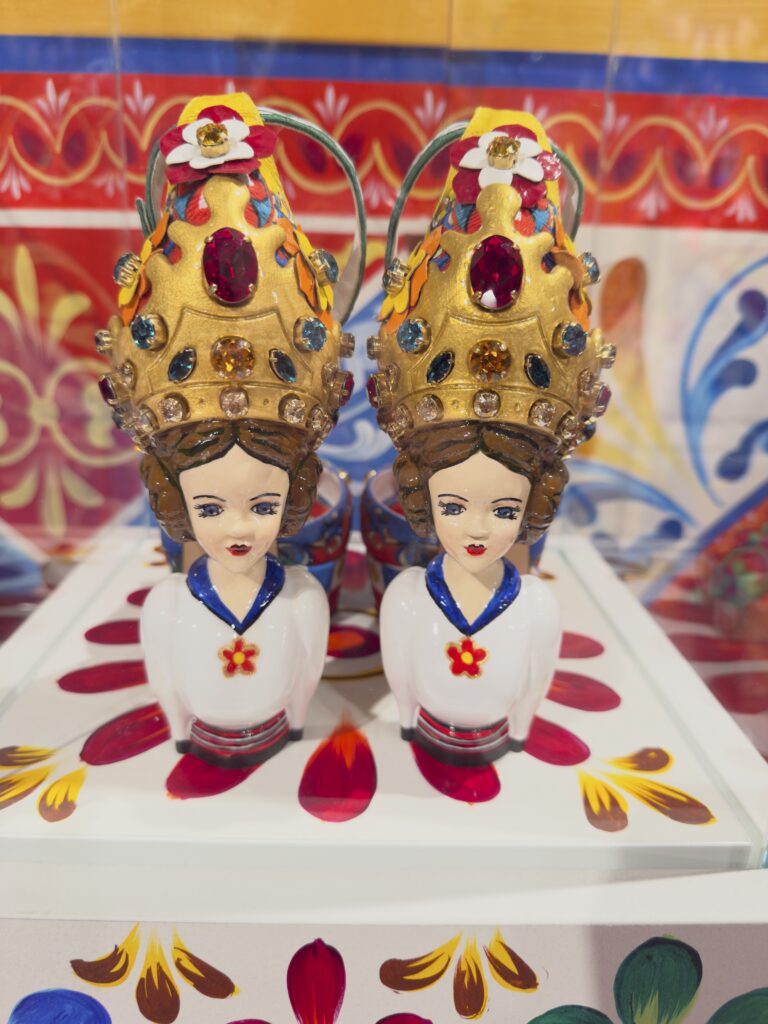
White Baroque, like a stucco sculpture
It depicted a bride and angels, embodying the essence of white baroque. In this room, Dolce & Gabbana took inspiration from Giacomo Serpotta’s stuccowork that shapes their couture designs, reflecting the dramatic art in Sicilian churches. Each garment reflects the fine details of Serpotta’s work.
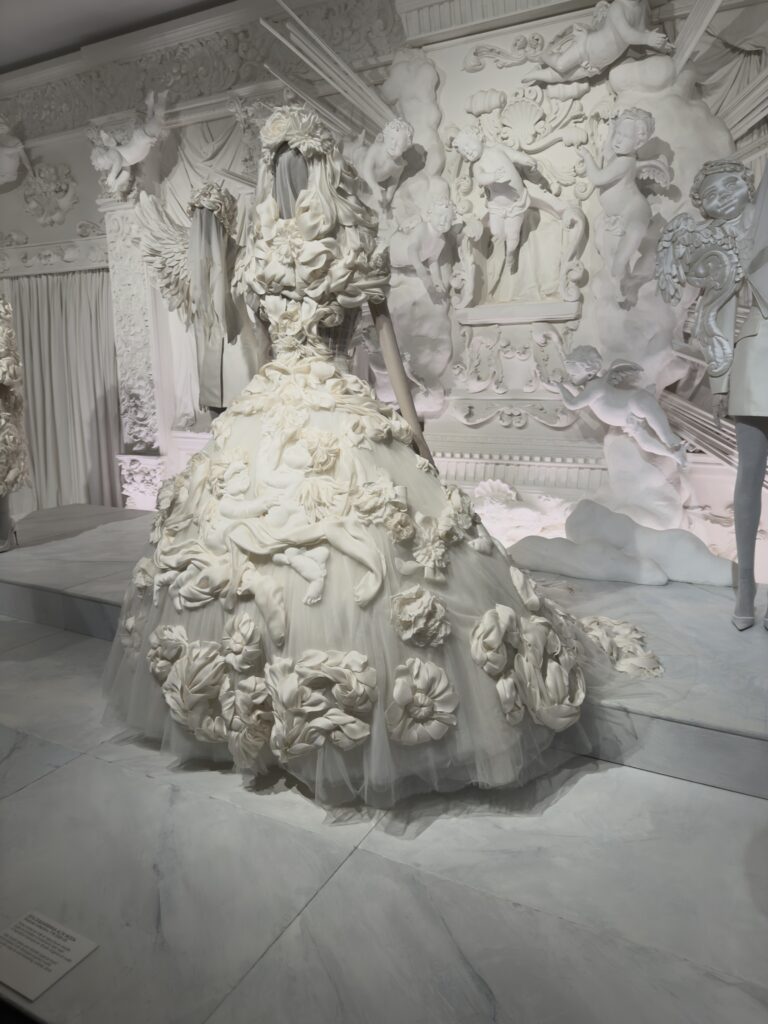
Devotion
This chapter turns the Sacred Heart into a dramatic show, set against golden altars. Models in golden outfits stand against dark backgrounds, creating a striking contrast that reminds us of being inside a Church.
The Workshop Recreation
One of my favourite parts was the recreation of their Milan atelier. This room takes you inside Dolce & Gabbana’s ateliers, where visions turn into reality. These workshops are the lifeblood of the Alta Moda, Alta Sartoria, and Alta Gioielleria collections. Here, 120 master artisans bring the designers’ visions to life with unmatched skill.
Then we went to the opera and theatre. Domenico Dolce and Stefano Gabbana’s showcase of dresses and costumes highlights the hard work that goes into these masterpieces. It makes you think about the people and time spent to create them. There are hours of weaving the fabric and doing the needlework for the embroidery.
Opera
The magical world of Dolce & Gabbana celebrates grandiose and splendour as a tribute to Italian opera. Domenico Dolce and Stefano Gabbana draw inspiration from the stage, turning their designs into extravagance.
This room features a collection from well-known operas, including:
- La Traviata, Aida, Attila, Rigoletto, and Don Carlo by Giuseppe Verdi
- Norma and The Capulets and the Montagues by Vincenzo Bellini
- Tosca, Madame Butterfly, and Turandot by Giacomo Puccini
And others.
Each garment captures the essence, reflecting the drama, romance, and grandeur of these masterpieces.

The Art and Craft of Glassworking
I found this room striking. Can you imagine a dress made of glass flowers? Here, the garments, mirrors, and chandeliers create a beautiful dance of reflections. The highlight was a gown inspired by Venice’s Murano glass.
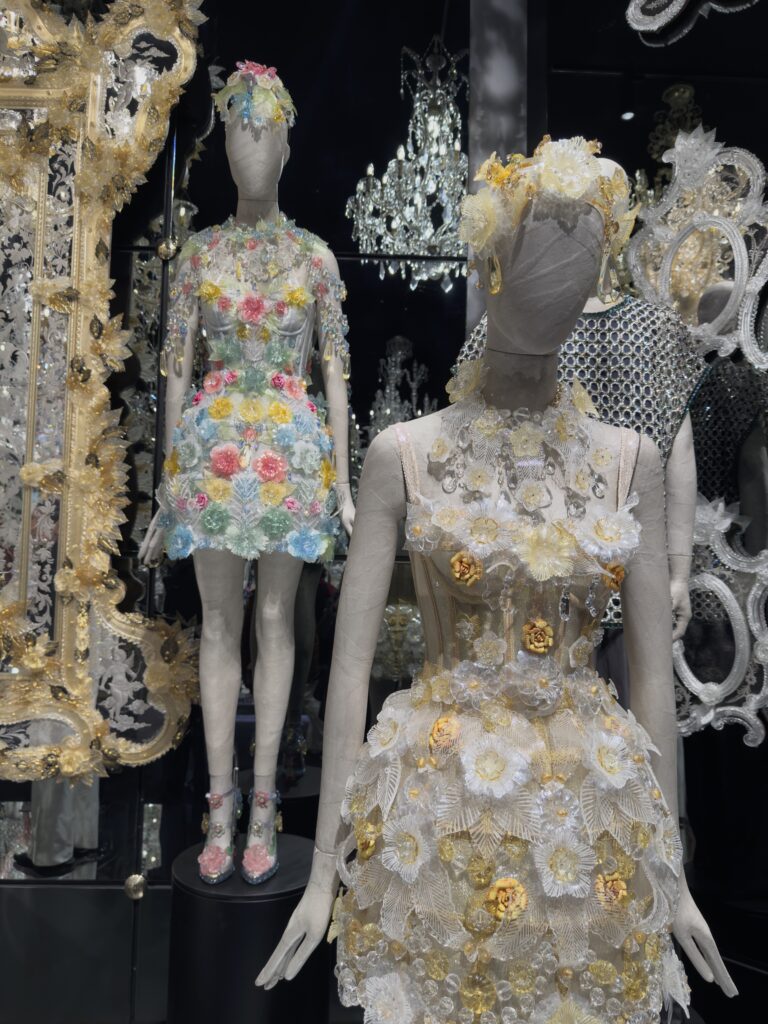
This was pure art and craftsmanship, worlds apart from fast fashion. How did we get from this to fast fashion?
As a photographer, I found this exhibition truly inspiring, as would any artist or creative. The display of beauty, art, and craftsmanship is remarkable. I could create a dream-like photoshoot with any of their gowns.
The exhibition in Paris has closed, but will open in Rome in May 2025! Don’t miss it!

comments +